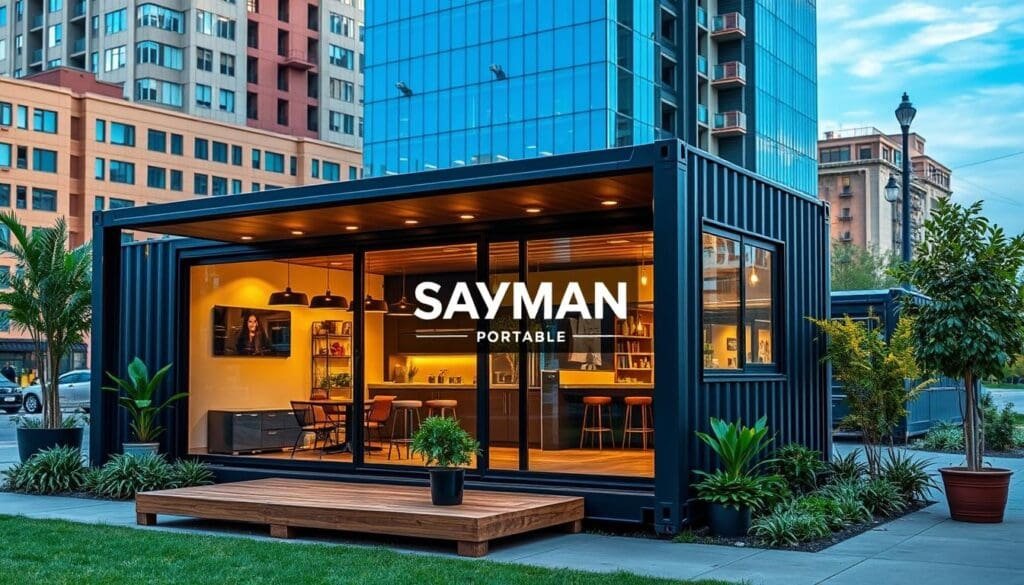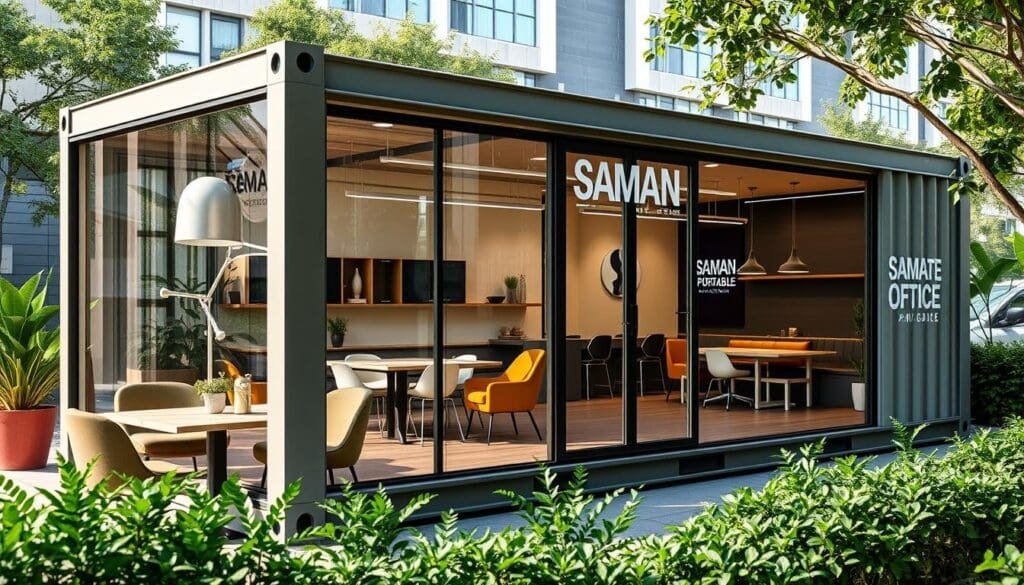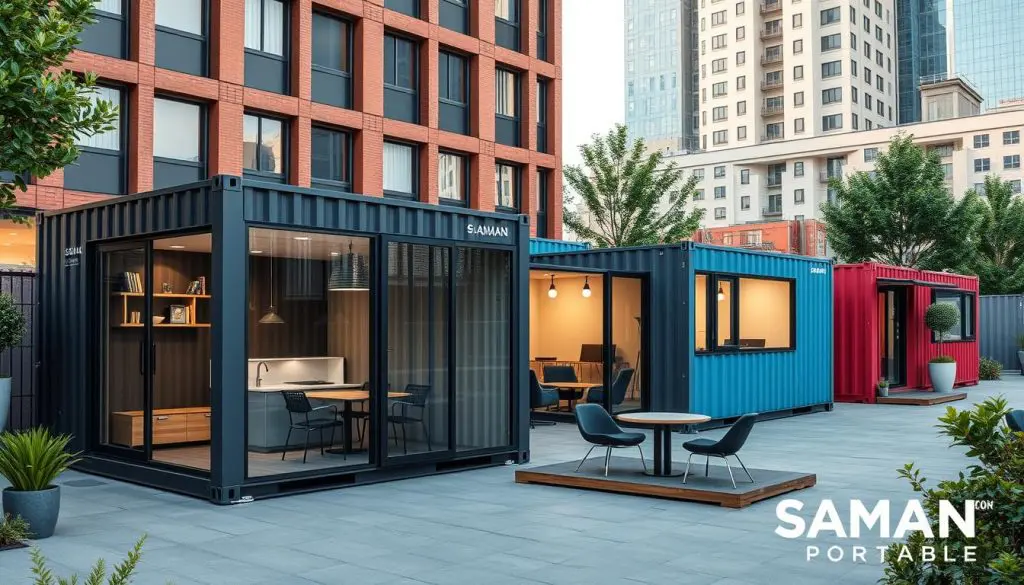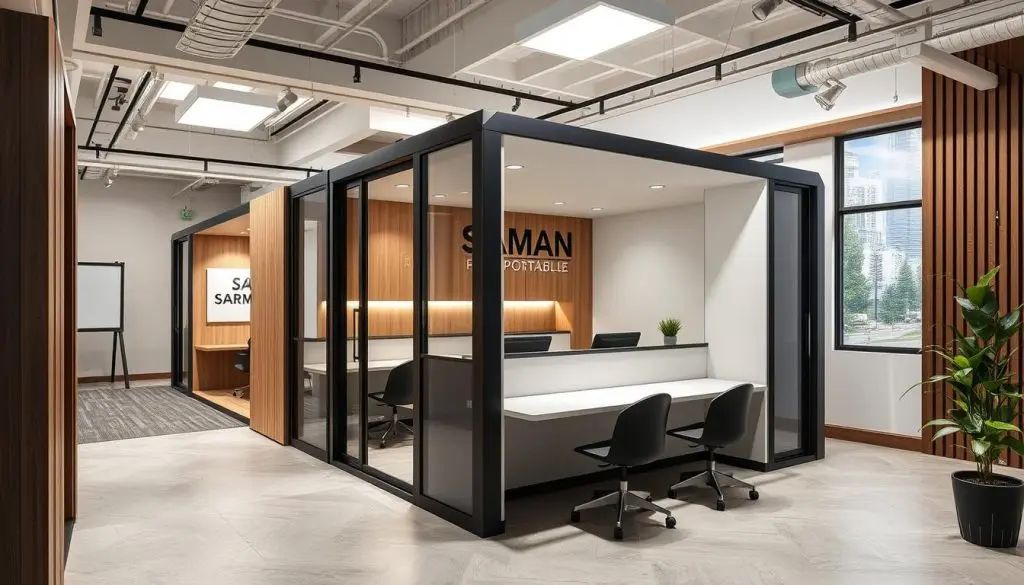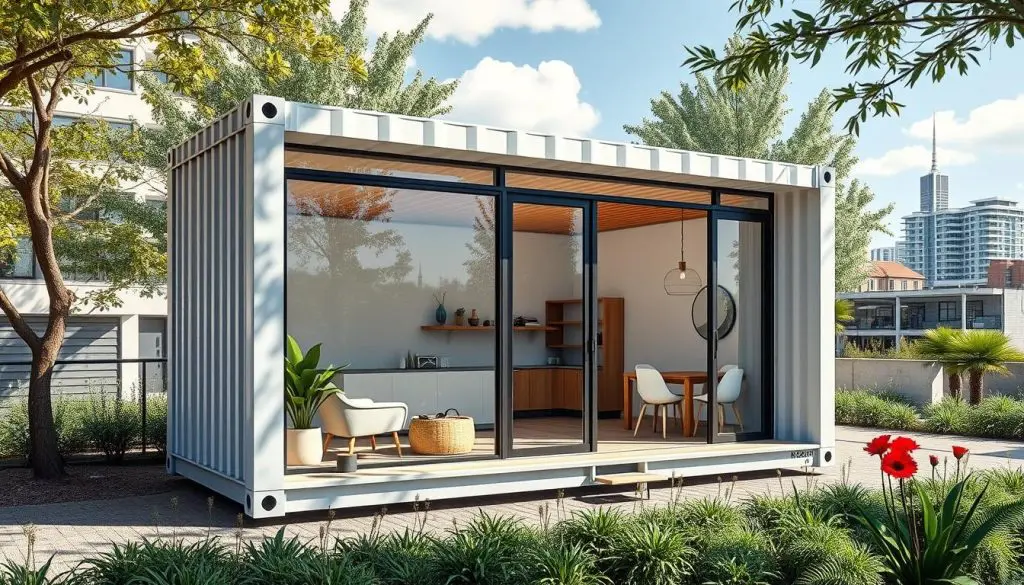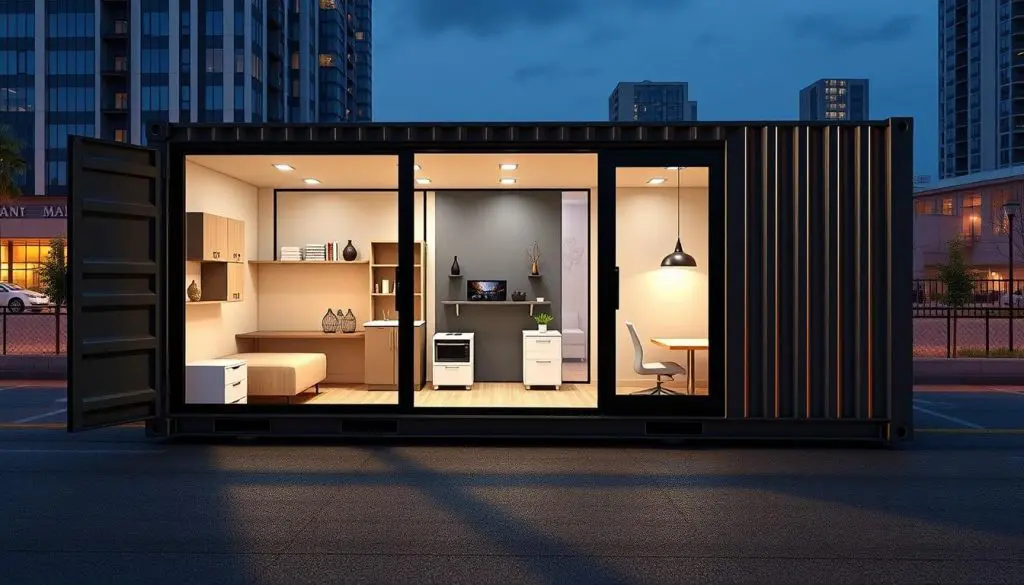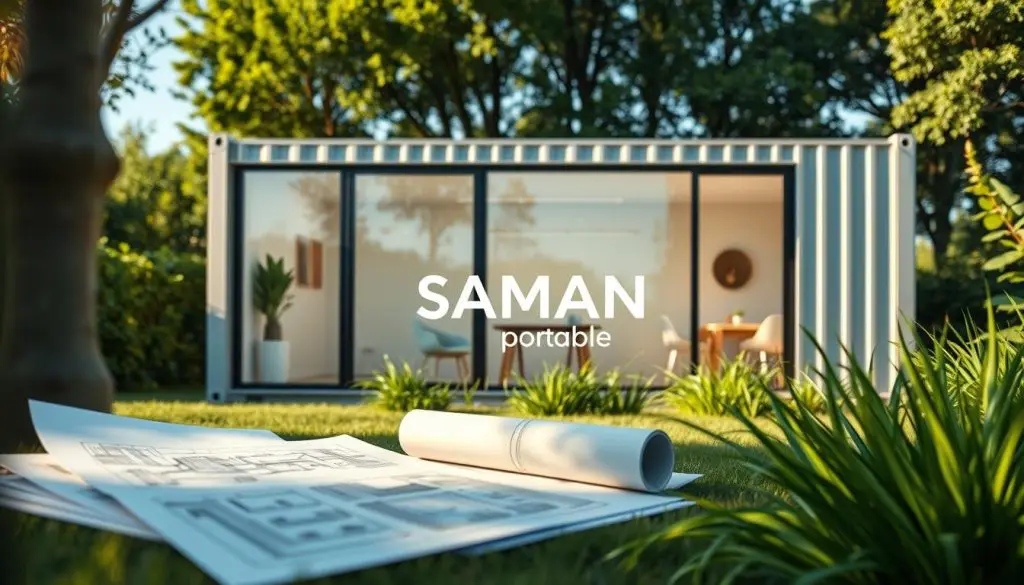Customization Options for Container Office Interiors
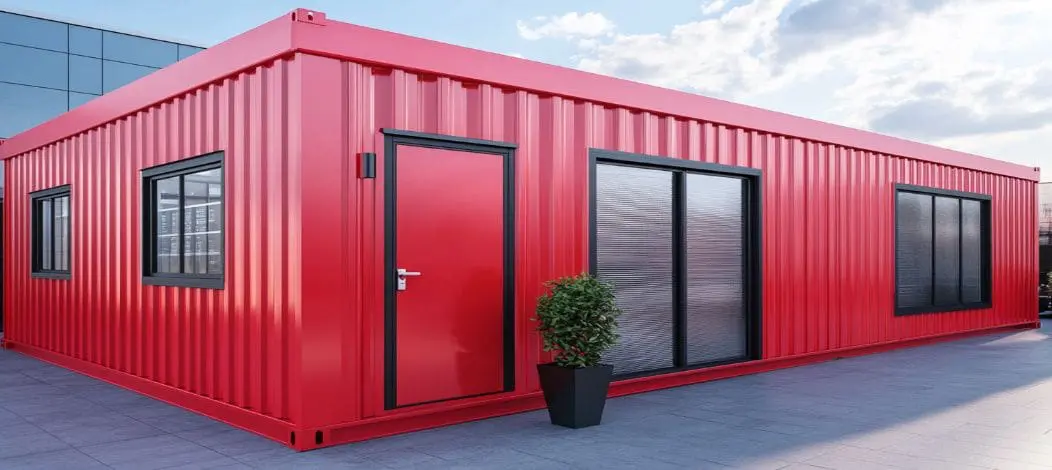
Did you know the global container office market is set to hit $20 billion by 2025? This huge growth shows how popular it is to turn shipping containers into unique workspaces, especially in India. Businesses are looking for new ways to improve their offices. Customizing container interiors is a big help, offering flexibility and saving money while meeting modern business needs.
In this detailed guide, we’ll look at all the ways you can customize your container office, all aspects of Container Office Customization. You’ll learn how to make a space that shows off your brand and helps your team do their best. We’ll cover everything from modular designs to green features and comfy furniture. You’ll see how to turn your container office into a place where people can be productive and inspired.
Key Takeaways
- The global container office market is projected to reach $20 billion by 2025, highlighting the growing popularity of this trend.
- Customization of container interiors offers a flexible and cost-effective solution for businesses seeking to optimize their office environments.
- This guide will cover a wide range of customization options, including modular design, sustainable features, and ergonomic furniture.
- Personalized workspaces can help businesses reflect their brand identity and empower employees to thrive.
- Exploring the key considerations for container office customization can help create a productive and inspiring workspace.
Understanding Container Office Customization or Container Office Interior Basics
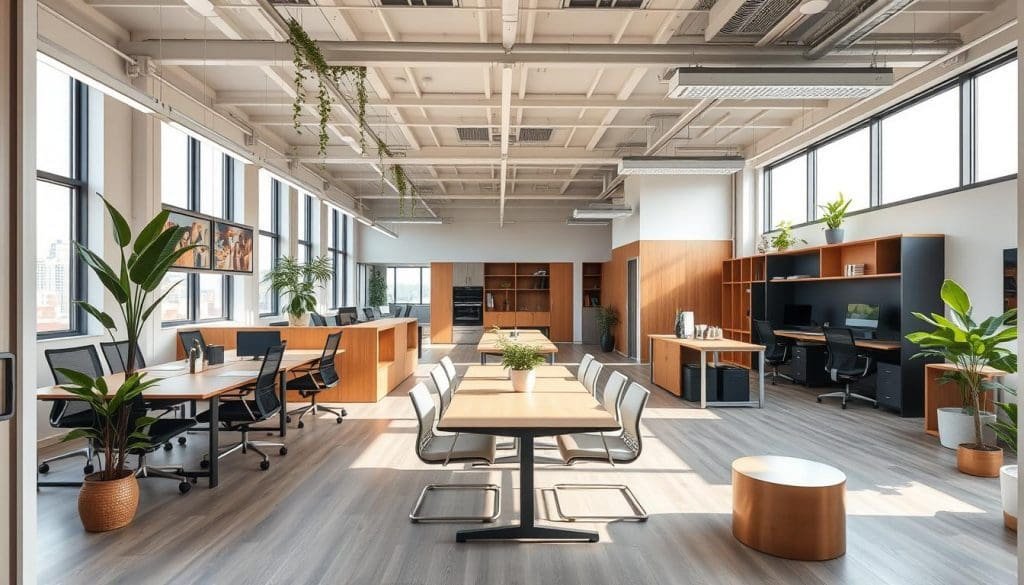
Turning shipping containers into offices is a new trend. It combines bespoke furniture and modular design. Knowing the basics, like dimensions and materials, is key to creating a unique workspace.
Core Components of Container Offices
Container offices have essential parts for comfort and productivity. These include strong steel frames, insulation, doors, windows, and flooring. These elements help create a layout that fits the business’s needs.
Standard Dimensions and Specifications
Container offices usually follow shipping container sizes, like 20-foot and 40-foot lengths. These sizes help in planning the space. They make it easy to fit in modular designs.
Material Considerations for Interiors
The materials inside a container office are very important. They should be durable and look good. Options like laminated wood, resilient flooring, and insulation improve the space’s look and function.
| Material | Benefits | Considerations |
|---|---|---|
| Laminated Wood Panels | Durable, aesthetically pleasing, and easy to maintain | Potential for moisture and temperature-related issues |
| Resilient Flooring | Comfortable, versatile, and low-maintenance | Careful selection for compatibility with container structure |
| Energy-Efficient Insulation | Enhances thermal comfort and reduces energy costs | Proper installation to maintain structural integrity |
Understanding container office basics helps businesses design better workspaces. They can use modular designs to their advantage.
Modular Design Solutions for Container Workspaces
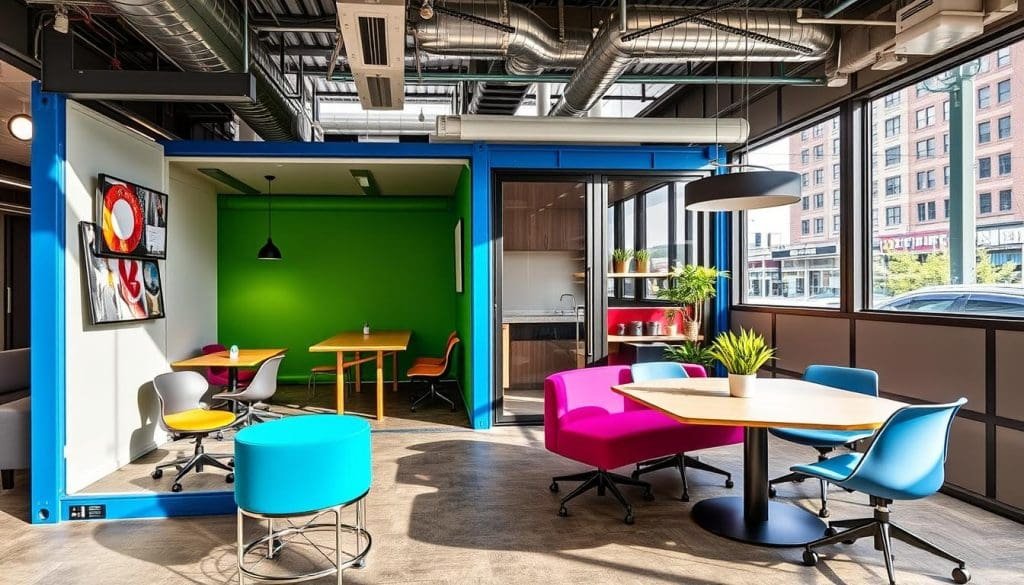
The need for flexible workspaces is growing fast. Container offices are perfect for creating open-plan layouts that meet today’s business needs. We’ll look at how modular designs can make container workspaces dynamic and flexible.
Flexible Partition Systems
Container offices are great because you can change their layout easily. Modular partitions help set up different areas, like private rooms and open spaces. These partitions can be moved or changed, helping businesses adjust their space as needed.
Adaptable Furniture Solutions
Container offices also benefit from adaptable furniture solutions. Adjustable desks and chairs make workstations customizable. This personal touch is key to a workspace that meets everyone’s needs.
Space-Saving Storage Options
- Use wall-mounted shelves and storage units to save space
- Choose modular, stackable storage for efficient organization
- Find hidden storage spots in desks and tables
Adding these storage options helps make the most of the space in container offices. It keeps the area tidy and organized. This also improves the look and function of the workspace.
“Modular design solutions are the key to unlocking the full potential of container offices, allowing businesses to create dynamic, adaptable workspaces that cater to their evolving needs.”
Lighting and Electrical Considerations
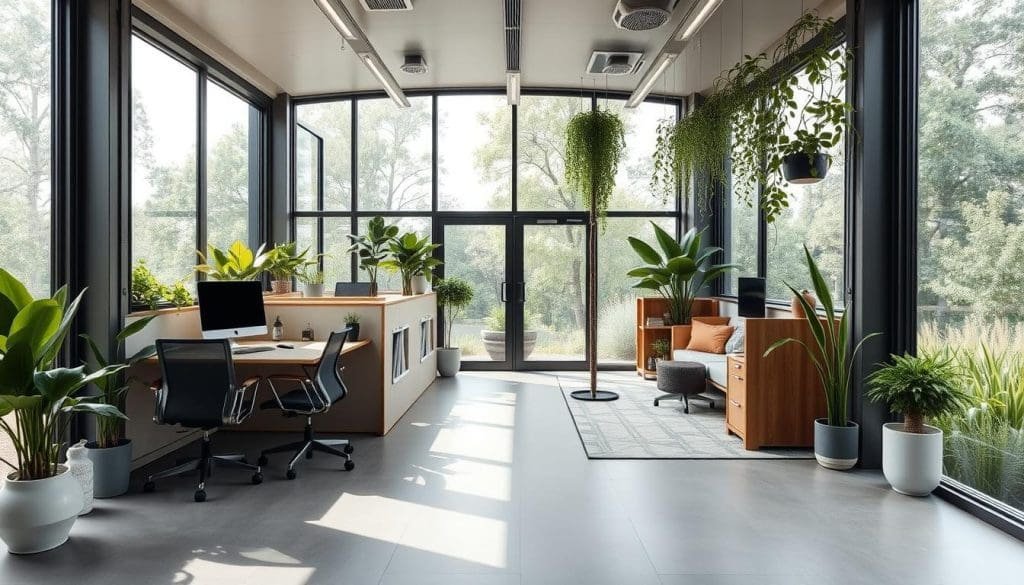
Creating a green and comfy office in a container needs focus on lighting and electrical systems. Getting these right makes the office better to work in and saves energy.
Maximizing Natural Lighting
Using natural light is key in green office design. Windows, skylights, and mirrors help bring in more daylight. This cuts down on the need for artificial light and makes the office nicer and more productive.
Placing desks near windows also boosts comfort and work quality.
Selecting Appropriate Artificial Lighting
Even with natural light, some artificial light is needed for consistent brightness. LEDs are great because they use little energy and last a long time. Controls that adjust light based on movement or dimming help save energy and make the space more comfortable.
Efficient Electrical Layout
Having a good electrical setup is vital for powering a container office. Planning where outlets and data ports go keeps the space tidy. This setup supports ergonomic furniture and digital tools without clutter.
| Lighting Considerations | Electrical Considerations |
|---|---|
| Natural light optimization Energy-efficient LED fixtures Dimmable and motion-activated controls | Strategically placed power outlets Integrated data ports and connectivity Organized cable management systems |
Designing with lighting and electrical systems in mind makes container offices better. They boost work quality, comfort, and save energy for today’s workers.
“Proper lighting and electrical design are crucial in transforming a container into a functional, comfortable, and energy-efficient office space.”
Climate Control and Ventilation Systems
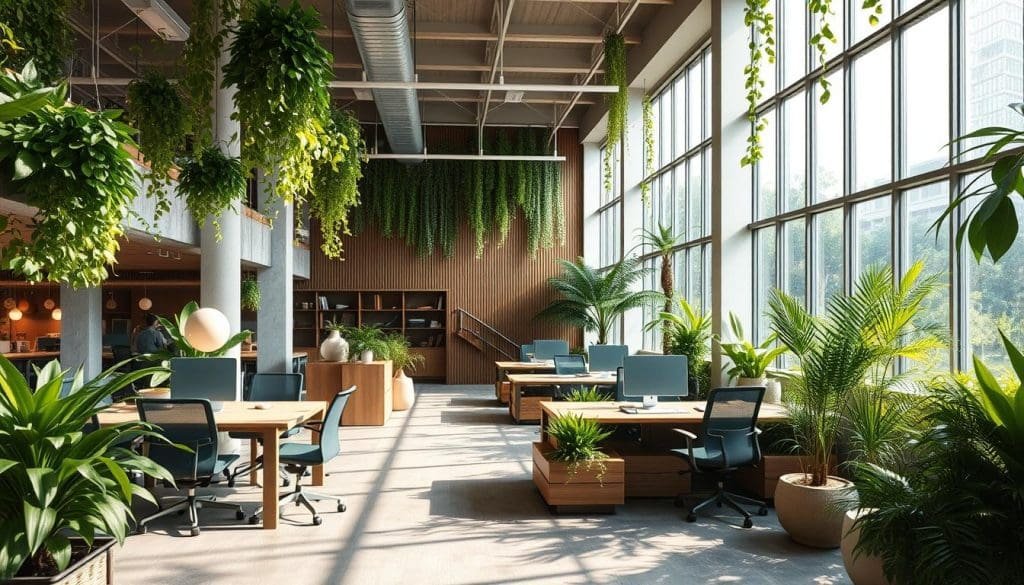
Keeping a work environment comfortable and productive is key in small spaces like container offices. New climate control and ventilation solutions are now part of biophilic and collaborative office designs.
HVAC Integration Methods
Adding efficient HVAC systems to container offices needs careful planning. Ductwork, compact cooling units, and zoned temperature control help manage the climate. This ensures employees stay comfortable.
Natural Ventilation Options
Container offices can also use natural ventilation to improve air quality. Windows, operable walls, and smart airflow designs help. They cut down energy use and add to the office’s natural look.
Temperature Management Solutions
Keeping the temperature right in a container office is tricky. The space is small, and the weather outside changes a lot. But, with adjustable controls, insulation, and sensors, it’s possible to keep the temperature steady. This lets employees work better without being bothered by temperature changes.
Designers of container offices use smart climate control and ventilation to make great workspaces. These solutions make the office comfortable and help employees stay well and productive. They’re key to a successful biophilic and collaborative office environment.
Sustainable Interior Design Features
The need for green office spaces is growing fast. Adding eco-friendly design to container offices is key. This helps businesses cut down on harm to the environment and makes workspaces better for employees.
Choosing eco-friendly materials is a big part of green container office design. Options include reclaimed wood, recycled plastic, and natural insulation. These choices are good for the planet and don’t lose out on looks or usefulness.
Energy-saving systems are also vital. This includes LED lights, smart HVAC controls, and windows that adjust to the sun and temperature. These steps lower carbon emissions and save money in the long run.
- Use natural air flow and cooling to cut down on mechanical needs.
- Add green walls or plants to boost air quality and connect with nature.
- Look into solar or wind power to run the office.
By focusing on green design, companies can make offices that are good for the planet and for people. These spaces are not just green; they also help employees feel better and work better.
“Sustainable design is not just about reducing environmental impact; it’s about creating spaces that uplift and inspire the people who use them.”
Ergonomic Furniture Selection and Placement
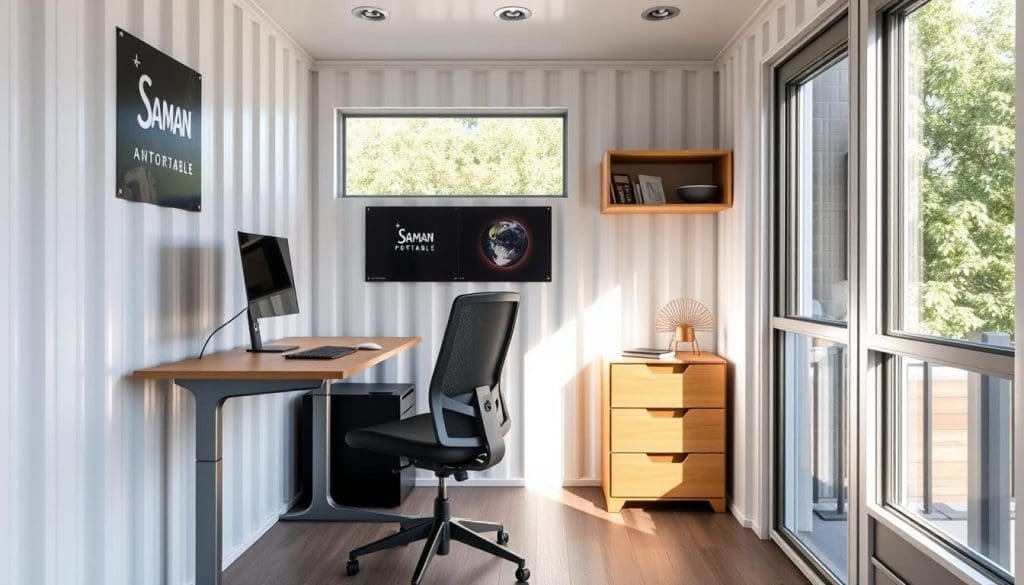
Creating a comfortable workspace is key for employee well-being in a container office. Choosing the right ergonomic office furniture is vital. By picking and placing desks, chairs, and other items wisely, we can make offices both productive and safe from health issues.
Desk and Chair Configuration
The heart of a good workspace is the desk and chair setup. Adjustable desks and chairs with back support are must-haves. They help fit each person’s needs and keep the body in a healthy position. Adding things like monitor arms and keyboard trays also helps, by easing neck, shoulder, and wrist strain.
Workspace Flow Optimization
- Setting up personalized offices to cut down on movement and boost natural workflow is a big win for comfort and productivity.
- Putting things you use a lot within reach, but still leaving room for teamwork and movement, makes for a smooth work area.
Accessibility Considerations
Being inclusive is a big part of interior design, and it’s true for container offices too. Making sure the ergonomic office furniture and layout work for everyone is key. This might mean having desks that adjust, plenty of room to move, and thinking about what people with disabilities need.
“Investing in ergonomic furniture and optimizing the workspace layout can significantly improve employee comfort, productivity, and overall well-being in a container office.”
Color Schemes and Material Selection
Creating a great container office interior needs careful thought on color schemes and materials. The right colors and materials can make the space look good, help people work better, and show off the company’s brand.
Color is key in bespoke furniture and personalized office interiors. It can make people feel certain ways, shaping the work area. For example, blues and greens can calm and focus, while reds and oranges can energize and spark creativity.
Choosing the right materials for interior layouts is also vital. Using strong, eco-friendly materials like wood, metal, and glass makes the office look good and last long. Adding textures or natural stone can make the space more interesting and touchable.
Designers can make a container office that looks good and helps people work better by picking the right colors and materials. This approach to bespoke furniture, interior layouts, and personalized office interiors can make the work place better and make employees proud to be there.
“The right colors and materials can transform a container office into a vibrant, inspiring, and functional workspace.”
In the end, mixing colors and materials well is key to a personalized office interior. It should meet the needs of those who work there and show off the company’s unique identity and brand.
Technology Integration and Smart Office Solutions
The world of work is changing fast. Technology and smart solutions are key for modern container offices. They boost productivity and make workspaces more collaborative and flexible.
Connectivity Infrastructure
Good connectivity is vital for a smart office. You need fast internet, strong Wi-Fi, and data ports everywhere. A well-thought-out modular office design helps businesses stay ahead. It lets teams work together smoothly.
Digital Workspace Elements
Today’s offices need digital tools for easy sharing and remote work. Cloud storage, document management, virtual whiteboards, and video calls are essential. They turn container offices into productive and innovative hubs.
Audio-Visual Equipment Setup
Good communication is crucial in modern offices. A smart audio-visual setup can make a big difference. With screens, speakers, and easy controls, virtual meetings and team work get better. Everyone, whether remote or on-site, stays engaged and productive.
| Technology Integration Considerations | Benefits |
|---|---|
| Reliable Connectivity Infrastructure | Uninterrupted access to digital tools and resources |
| Comprehensive Digital Workspace Elements | Seamless information sharing and remote/hybrid collaboration |
| Cutting-Edge Audio-Visual Equipment | Enhanced virtual meetings, presentations, and team collaborations |
By adding these tech solutions, container office designers can make flexible workspace solutions. These empower teams, create collaborative office environments, and boost innovation in the workplace.
“The future of work is not about where we work, but how we work. Technology integration is the key to unlocking the full potential of container office spaces.”
Space Optimization Techniques
As an interior designer, I know how crucial it is to use every inch in a container office. Open-plan layouts and flexible office setups are essential. They help us make the most of these small spaces. I use versatile furniture and smart storage to create a balanced and efficient workspace for my clients.
Optimizing vertical space is a great strategy. Wall-mounted shelves, overhead storage, and lofted areas offer plenty of room without making the office feel cramped. Also, using space-saving storage like modular cabinets keeps the office tidy and boosts productivity.
My aim is to maximize the potential of container office interiors. By combining open-plan layouts, flexible setups, and clever storage, I turn these small spaces into vibrant, useful, and attractive work areas. These spaces meet the specific needs of my clients.
If you are looking for best container office designer or space optimizer, contact us.
FAQ
What are the core components of a container office?
A container office has several key parts. These include the shipping container itself, interior walls, and flooring. It also has lighting, electrical systems, and HVAC equipment.
What are the standard dimensions of a container office?
Container offices usually come in two sizes. A standard 20-foot container is 20 feet long, 8 feet wide, and 8.5 feet tall. The bigger 40-foot containers are 40 feet long, 8 feet wide, and 8.5 feet tall.
What materials are commonly used for container office interiors?
For the inside, people often use plywood, drywall, laminate, and engineered wood. These materials give a clean look and can be changed to fit your needs.
How can I create a flexible and adaptable workspace within a container office?
To make a space flexible, use modular furniture. This includes movable walls, adjustable desks, and storage units. It lets you change the layout to fit your team and needs.
What lighting and electrical considerations are important for a container office?
Good lighting and electrical setup are key. Use big windows or skylights for natural light and add LED lights. Make sure there are enough outlets and charging spots for your equipment.
How can I integrate sustainable and eco-friendly features into my container office?
For a green office, use recycled materials and energy-saving HVAC. Add living walls and choose furniture that’s good for the planet.
What ergonomic considerations should I keep in mind when designing a container office?
Think about comfort and safety. Choose adjustable furniture and make sure the space is easy to move around. This helps everyone stay healthy and work better.
How can I incorporate technology and smart office solutions into a container office?
Add tech by setting up strong internet and Wi-Fi. Use video calls, interactive boards, and smart systems to make work easier and more fun.
What space optimization techniques can I use in a container office?
Use space wisely by adding shelves and wall storage. Choose furniture that does more than one thing. Use fold-away desks and sliding doors to save room.
 Container Cafe
Container Cafe




















































































